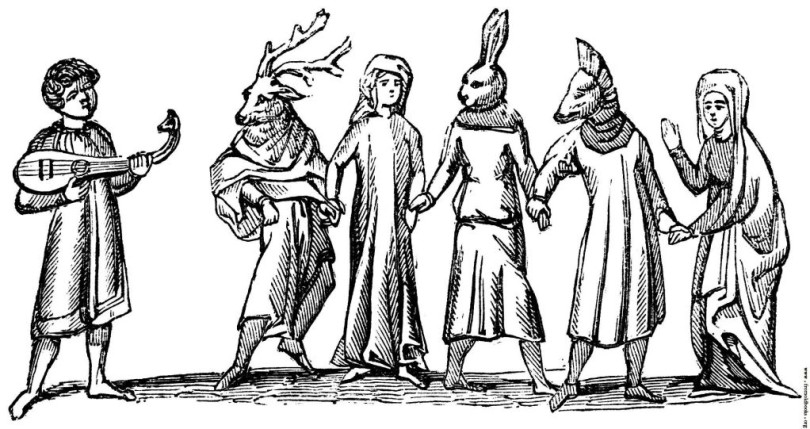Ever since the beginning of civilization, man has been captivated by all that happens around him. The early man’s experiences took the shape of primitive drawings and coded symbols. Gradually language evolved and these experiences were transmitted orally through stories. As civilization progressed, the essence of these stories took the shape of various art forms – such as song, dance, drama and fine arts. We are now in an era of rational thinking and scientific reasoning. But, the inner child within us is still enchanted by the magical realms created by stories. And the human brain, even today, tends to understand thoughts that have been conveyed as stories, better than any other form of communication, irrespective of social conditioning and training.
History tells us how different civilizations emerged in different parts of the world, at different times. Each with its own culture and tradition, each with its own unique and rich set of values. Yet, the one thing that was common to all – they all told stories. Each created its own mediums of storytelling that helped in passing on their values from generation to generation. Each had its set of dedicated storytellers whose job it was to keep these stories alive. One such form of storytelling was Mumming.
History and Origin of Mummers
The word Mummers seems to have originated from the French word Momeur, the definition of which is still ambiguous. The mummers could also have derived their name from various other origins, sometimes meaning mum, to remain silent or mommo, meaning mask. It generally means to disguise oneself or be a disguised person.
Mummers are a group of men and women in fancy dresses and masks, disguising themselves as fantasy characters. They mostly pick stories from folklore, and the stories are told theatrically through plays. They are known by various names such as guisers, rhymers, soulers and galoshins. The mummers have their roots tracing back to ancient Egypt where their performances and plays were a favorite pastime among the poorer class.
Mumming traces its roots to pagan, Anglo-Saxon and Celtic cultures that celebrated the winter solstice and Samhain. It became popular in the British Isles from where it spread to many former British colonies, specifically in US and Canada. Although sometimes performed in the streets, it is more commonly performed during visits to houses and pubs. References to mummers can be traced as far back as 1296, where ‘mummers at the court’ were a part of the marriage rituals of Edward I’s daughter during Christmas. These references hint that the mummers would be involved in a performance of dicing with the hosts for jewels and would later join the other guests in an elaborate dance. Mummers mostly performed seasonally, at Christmas or Easter. As such, many characters in these stories were found to recur in local seasonal performance variants – Saint George, King George, a quack Doctor, Old Father Christmas, the Fool and Beelzebub.
[adinserter block=”2″]
The Mummers’ Parade
The Mummers Parade is a notable and popular event held on New Year’s Day in Philadelphia, Pennsylvania, USA. It is also believed to be one of the oldest folk festivals since 1860. The parade is a melting pot of various cultures from European, English, German and many other countries. Initially held during Boxing Day (December 26th) celebrations, it was later extended to New Year’s Day. The masqueraded crowd would parade around the city shouting and celebrating,
Here we stand before your door,
As we stood the year before;
Give us whiskey; give us gin,
Open the door and let us in.
Or give us something nice and hot
Like a steaming hot bowl of pepper pot!
The Philadelphia Mummers’ Parade comprises of four major groups.
The Comics
The mummers’ parade usually starts with the comics’ group. They are generally clowns, dressed in colorful, multilayered outfits accompanied by equally colorful umbrellas and other embellishments. The themes portrayed by them are satirical in nature, largely based on current events, pop culture and traditions.
Wench Brigades
This category of mummers branch from the comics and are distinguished by their painted faces and elaborate suits. Sometimes the men dress up in women’s dresses and vice versa and are accompanied by live bands.
The Fancies
Fancies are the most colorful group among the mummers, popular for their fantasy-themed dresses, masks and disguises. The costumes are both intricate and magnificent. The strut on small floats is musical, accompanied by live bands during the entire parade.
String Bands
The String Bands are distinguished by their grandeur. The parade of String bands moves on descriptive floats. The mummers, dressed in the trademark colorful costumes, present a theme with a wide assortment of musical instruments, always directed by a captain. The performance is often done in military-drill formations.
***
Traditions vary and so do various forms of storytelling. Mummers have been around for centuries, standing apart from other art forms for varied reasons. Through their unique way of reflecting the present situations of the society and celebrating the diversity of the human nature, mummers have been a popular part of the world culture and an effective medium of storytelling. The underlying principles of the themes enacted by the mummers have an effectual impact on lifestyle and the differences due to cultural and societal hierarchies. In addition to being highly interactive, they mummers play an important role in transporting the audience to a different time and place through their performance.
Here are some interesting videos of Mummer’s Dance
Disclaimer: We try our best to make our articles as factually correct as possible. Tell-A-Tale or its editors do not take any responsibility for any factual errors in the article. In case you notice any discrepancies, please drop a line to editor@tell-a-tale.com.






when was this published